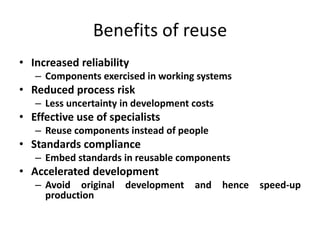The document provides an introduction to software engineering and discusses key concepts. It defines software, engineering, and software engineering. Software engineering aims to develop reliable software products using scientific principles and methods. The document outlines different types of software products and applications. It discusses the importance of software and costs associated with software. Finally, it introduces the concept of software evolution and laws of software evolution.


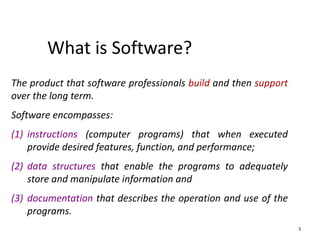





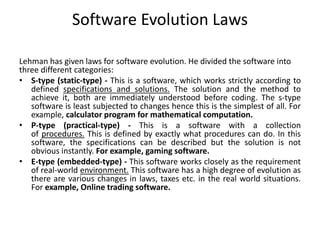
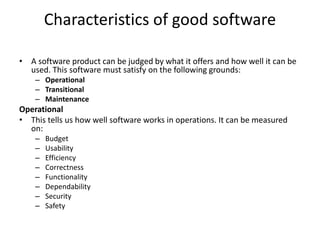














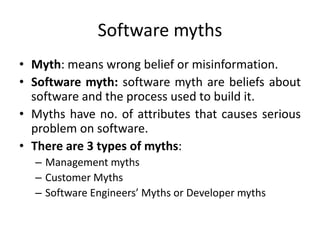
![Management Myths [Pressman]
• We already have standards and procedures for building
software; isn’t that enough?
– How widely used is it?
– How relevant to the team?
– How useful to the project?
• If we’re behind schedule, we’ll just add more programmers to
catch up
– “Adding people to a late project makes it later”
– Interference
• They think they have latest computer.
• A good manager can manage any project.](https://image.slidesharecdn.com/seunit-1-220603122341-e28d0d8c/85/Software-Engineering-_-Introduction-26-320.jpg)
![Customer Myths [Pressman]
• s/w myths believed by customer who can internal
or external.
• Customer always think that s/w is development is
an easy process
• A general statement of work is sufficient to kick
off the project,
• Requirements can change, and that’s OK because
software is so flexible
– Most software project failures can be traced to
inadequacy of requirement specifications](https://image.slidesharecdn.com/seunit-1-220603122341-e28d0d8c/85/Software-Engineering-_-Introduction-27-320.jpg)
![Software Engineers’ Myths [Pressman]
• If I miss something now. I Fix it later
• Once the program is written, I’m done
– Between 60-80% of effort expended after delivery
• Until the program is written, quality is uncertain
– Formal design reviews
– Formal code reviews
– Test-first approaches
– Prototyping to verify design and structure
– Prototyping to validate requirements
• The only deliverable is the program itself
– Lots of documentation: installation guides, usage guides,
maintenance guides, API definitions and examples](https://image.slidesharecdn.com/seunit-1-220603122341-e28d0d8c/85/Software-Engineering-_-Introduction-28-320.jpg)
![Software Engineers’ Myths [Pressman]
• Documentation is Software-Engineering busy
work
– Focus is on quality, not quantity
– Documentation can be hard for engineers to
write, just as C++ may be difficult for poets.
– Conserve energy: documented code can serve as
a basis for useful documentation](https://image.slidesharecdn.com/seunit-1-220603122341-e28d0d8c/85/Software-Engineering-_-Introduction-29-320.jpg)




